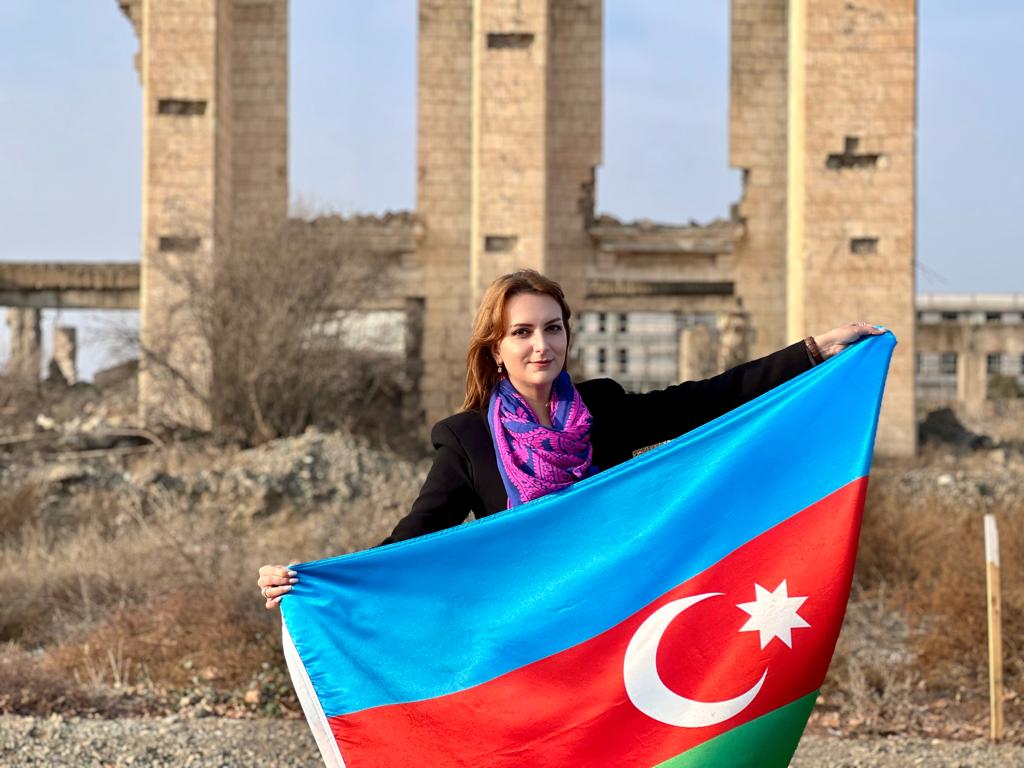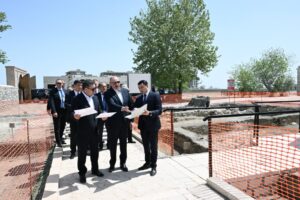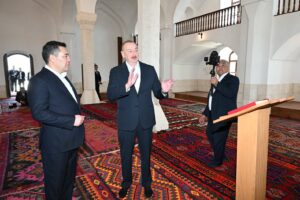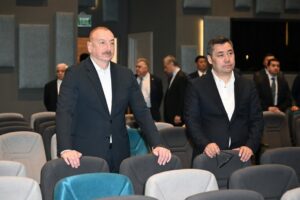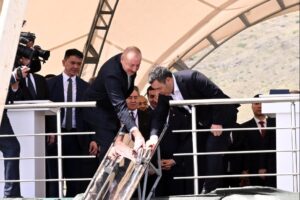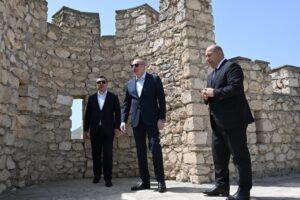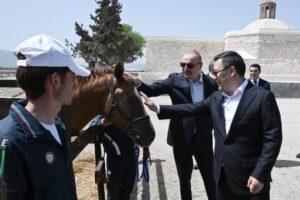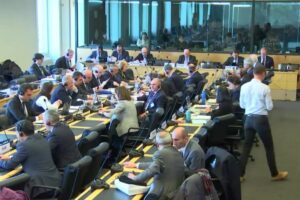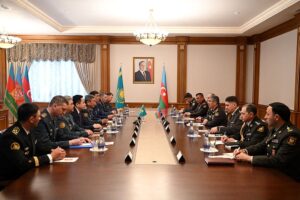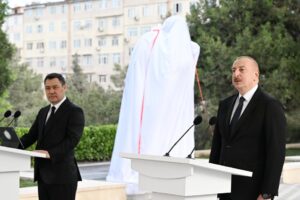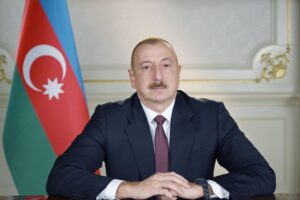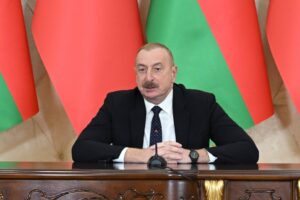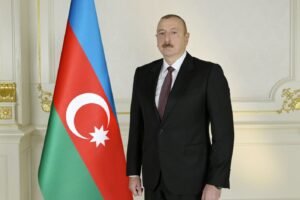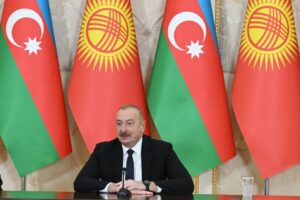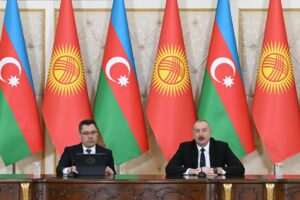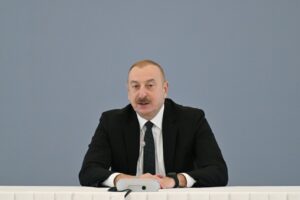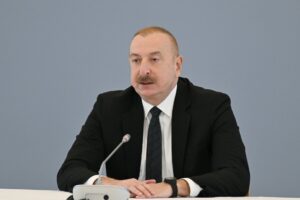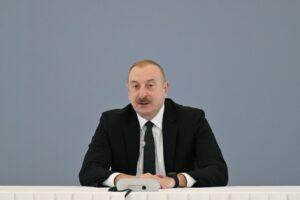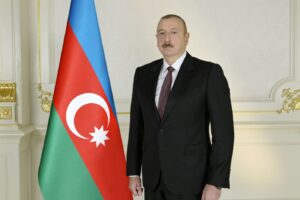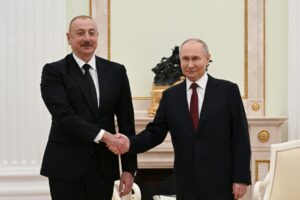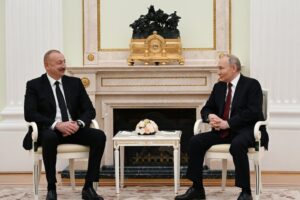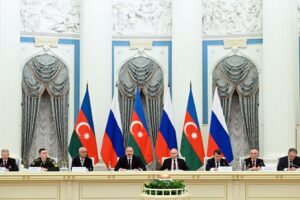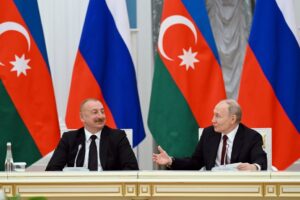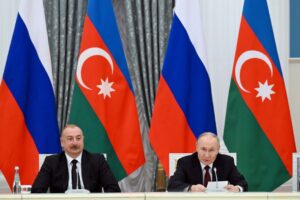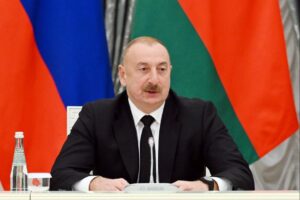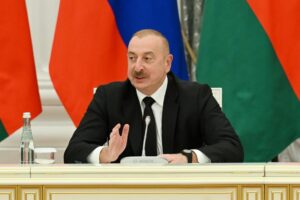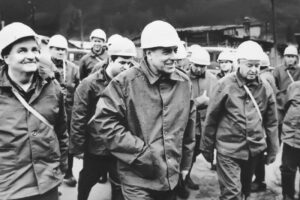Tokyo, 23 January, /AJMEDIA/
Interview with the well-known TV presenter, Deputy Chairman of the Russian Community of Azerbaijan Anastasia Lavrina.
-Your movie, which was made to highlight Armenian vandalism in Karabakh, was recently streamed on the CBC TV channel. How did the idea for making such a movie first come to you?
-During the existence of the Karabakh conflict, Armenia did not abandon attempts to present the conflict with Azerbaijan as interreligious. After the victory of Azerbaijan in the Patriotic War, Yerevan began to unreasonably accuse Baku of destroying the Christian cultural heritage in Karabakh, while presenting the monuments of Caucasian Albania as material evidence of the history of the Armenian people. At the same time, they were silent about the destruction of more than 400 cultural, historical and religious sites on the previously occupied Azerbaijani lands.
Being ethnically Russian Azerbaijani citizen, I saw how representatives of all ethnic groups, shoulder to shoulder, were fighting for the restoration of the territorial integrity of Azerbaijan in 2020. Under the leadership of Supreme Commander-in-Chief President Ilham Aliyev, our valiant army won a resounding victory on the battlefield, but now it is important to win the information war.
In 2021, I shot my first film, “The War of Armenian Separatists with Churches in Karabakh,” where I spoke about the Russian Orthodox Church in the Khojavend region of Azerbaijan, which was completely destroyed during the years of occupation. The film was shown on CBC TV and later translated into English, French and Greek languages. With the help of our Embassies the film was presented to the wide audience in Paris, the Vatican and Brussels. The European audience finally saw and learned the whole truth about the atrocities of the Armenian armed forces, who were previously on Azerbaijani lands.
This time, my new film talks about another temple of the Russian Orthodox Church in the village of Talish in the Terter region, as well as about many Albanian churches destroyed or rebuilt during the years of occupation. My goal is unchanged, I want to tell the whole world the truth about the crimes of Armenia, as well as about the unique model of multiculturalism and tolerance that exists in my country. I have big plans to present the film on the world stage.
-The film gave particular attention to the Armenians’ relocation, a people who arrived in the Caucasus later, to this historic region of Azerbaijan. What can you say about it?
-There are many testimonies, archival documents about the gradual process of resettlement of Armenians in the Caucasus from Russia, Iran and the Ottoman Empire, starting from the 19th century. The Armenians immediately began to destroy the heritage of other peoples, rebuild and forcibly subjugate the Albanian churches. In order to achieve their goals, with the help of foreign patrons, Armenians carried out monstrous terror and genocide against Azerbaijanis and Turks, thereby pursuing a policy of ethnic cleansing.
Armenians do not like to remember their past, but on the other hand, Armenian pseudo-historians tirelessly spread information about the image of so-called “Great Armenia”, positioning the lands of Azerbaijan, as well as part of the lands of Turkiye and Georgia, as Armenian. Representatives of the Armenian National Committee of America, ANCA, openly call for the occupation of the territories of the above-mentioned countries. And this despite the fact that modern Armenia itself was created on the historical lands of Azerbaijan.
-Several temples that were completely destroyed or “Armenianized” are described in the movie, as the title implies. Additionally, details are provided about how Azerbaijani culture is being slowly destroyed on the historical Azerbaijani territory that is now part of Armenia. In this regard, what can you say?
-Restoring temples and monasteries, Armenian craftsmen applied inscriptions on the walls and added some elements to the architecture, which today give grounds to identify many churches and monasteries as Armenian. Although initially, these were Albanian temples. In 1836, at the insistence of the Armenian Gregorian Church, and by decree of the synod of Tsarist Russia, the Albanian Apostolic Church was liquidated. All Albanian churches started to be positioned as Armenian-Gregorian ones. In one Albanian temple, I saw a horrifying picture. The Albanian crosses, deeply carved in the walls, were simply crossed out with a sharp object, and under them Armenian crosses were drawn by hand. It’s just mind-boggling.
A similar fate befell the ancient Azerbaijani historical and cultural monuments located on the territory of modern Armenia. Irevan, one of the historical pillars of Azerbaijani culture and statehood, as well as Zangezur, historically was one of the strategically significant regions of Azerbaijan. There were more than a thousand Azerbaijani settlements, hundreds of historical and architectural monuments, testifying to the centuries-old residence of Azerbaijanis. At the beginning of the 20th century, more than 300 mosques were registered in Armenia, and now only the Blue Mosque has remained partially unscathed. However, as a result of a change in original features, the Blue Mosque is now presented as a “Persian” one. In the 20th century, Azerbaijanis were massively deported from Armenia, and all material evidence indicating that these lands belonged to Azerbaijan was destroyed.
-Several journalists and other public figures in Japan occasionally raise their voices to call attention to Armenian lies. Wouldn’t collaborative effort on this lead in better results?
-Yes, of course, we need to cooperate with all countries, we need to tell the truth about the situation in the region. Armenia, using its diaspora in different countries, spreads misinformation. Japan has good relations with Azerbaijan. Japan’s experience in resurrecting Hiroshima city from the ashes and its further development will be very useful to Azerbaijan. Just like Hiroshima, the city of Aghdam, liberated from the Armenian occupation, can become a symbol of peace, symbolizing a sincere desire for sustainable peace in the region. Aghdam was called “Hiroshima of the Caucasus” because of the scale of destruction. During the recent visit of the Special Representative of the President of Azerbaijan in the liberated territories (excepts Shusha) Emin Huseynov to the Japanese city of Hiroshima, a discussion of cooperation between the cities of Aghdam and Hiroshima took place. I believe that it is very important to further develop cooperation between our countries.
-What do you think about this movie being translated into Japanese and released in Japan?
As I said before, my first film was translated into several languages and presented in different countries. The Azerbaijani-Japanese Friendship Center, a diaspora organization operating in Japan, offered to translate the film into Japanese and distribute it in Japan. This is a very interesting and important event in the process of bringing the truth about Azerbaijan to East Asia. We will work hard on this.
Vugar Agayev
Tokyo

